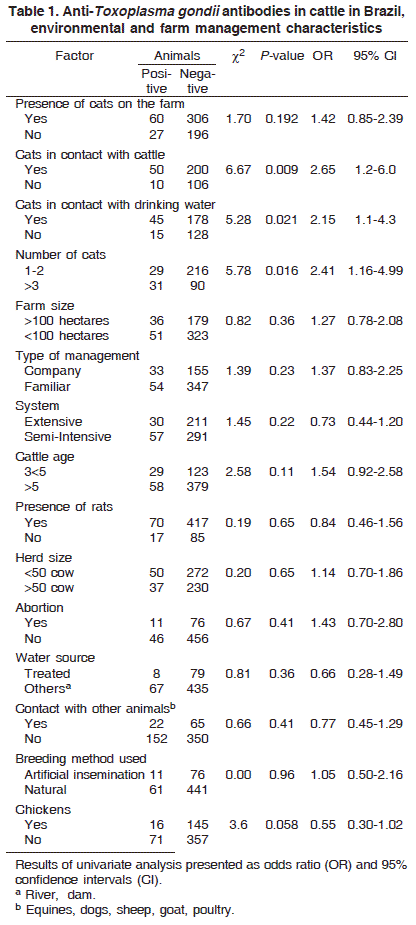Toxoplasmosis is one of the most common parasitic zoonoses throughout the world. Infection in man and animals varies in different geographical areas influenced by many environmental conditions. Seroprevalence of Toxoplasma gondii infection in cattle in Brazil ranges from 1.03 to 71%. A cross-sectional survey was carried out in 58 out of 453 farms in the South Fluminense Paraiba Valley, State of Rio de Janeiro, Brazil. Over 3-year-old cattle (n=589) from dairy herds were selected for blood collection and detection of anti-T. gondii antibodies by indirect immunofluorescence reaction (IFA) with initial titration of 1:16; titers > 64 were considered positive. Univariate analysis of risk factors showed that cats in contact with cattle, cats in contact with drinking water, and number of cats were associated with T. gondii seroprevalence. Logistic regression revealed a two-fold increased risk for infection of cattle (p=0.0138) through larger number of cats (>3) compared with low numbers of cats (1-2) on the farm. In contrast, the presence of chickens was considered a protective factor (p=0.025).
Dairy cattle; toxoplasmosis; antibodies; risk factors


